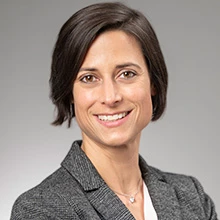 Sexism and ableism intersect to create these environmental barriers, setting apart the experience of women with disabilities from men with disabilities and nondisabled women. Photo by Shutterstock
Sexism and ableism intersect to create these environmental barriers, setting apart the experience of women with disabilities from men with disabilities and nondisabled women. Photo by Shutterstock
After getting her master’s degree in Biochemistry, a woman applied for a job as a research assistant at a large pharmaceutical company in Belgium. The interview went well, but after she told the hiring manager about her hearing impairment and pregnancy, they offered her an administrative job instead of the one she applied for. What would you have done? She sued, and the Labor Court of Antwerp ruled that she suffered multiple discrimination based on her disability and her gender, awarding her cumulative damages. Cases like this one show us the importance of laws that recognize intersectional and multiple discrimination.
Women with disabilities around the world face negative attitudes about their reproductive rights, stigma regarding their economic participation, inaccessible infrastructure and technology, and lack of awareness of their rights and needs by policymakers. Sexism and ableism (discrimination and social prejudice against people with disabilities or who are perceived to be disabled) intersect to create these environmental barriers, setting apart the experience of women with disabilities from men with disabilities and nondisabled women. As a result, women with disabilities are often excluded from economic opportunities and participation in society and face higher rates of gender-based violence.
While Women, Business and the Law (WBL) has documented how legal barriers to women’s economic opportunities have evolved across the world since 1970, the WBL index uses standardized assumptions to ensure comparability of the data across 190 economies, including the assumption that the woman in question is nondisabled. As a result, the index overlooks barriers of accessibility related to both disability and gender. To fill this gap, the WBL project pledged under the World Bank Group’s Commitment No. 4 on Disability-Inclusive Development to introduce questions on disability to better understand the state of economic empowerment for women with disabilities.
Three-quarters of economies around the world do not legally recognize multiple discrimination of women with disabilities
With the support of the Human Rights, Inclusion and Empowerment (HRIE) Umbrella Trust Fund, Women, Business and the Law recently expanded its pilot data collection on the rights of women with disabilities and added a set of 11 questions related to nondiscrimination provisions and legal protections pertaining to parental rights, inclusion in the workforce, and protection against gender-based violence (Box 1). This newly published data confirms previously found gaps: three-quarters of economies around the world do not legally recognize the multiple discrimination of women with disabilities.
Box 1. Women, Business, and the Law 2022 research questions on the rights of women with disabilities
-
Is there a gender equality or nondiscrimination law that specifically recognizes and protects the rights of women with disabilities?
-
Is there a law on persons with disabilities that specifically protects and promotes the rights of women with disabilities?
-
Does the disability rights law follow the social model?
-
Does the law provide support to women with disabilities in the exercise of their parental rights and responsibilities (e. g., extension of maternity leave, financial aid, legal protection to keep custody for children, etc.)?
-
Is there a law or policy that mandates reasonable accommodation for workers with disabilities?
-
If the answer is “Yes,” does the reasonable accommodation law or policy mention women with disabilities?
-
Are there incentives in law or policy for businesses to employ persons with disabilities (e. g., quotas, tax breaks, wage replacement)?
-
If the answer is “Yes,” does the employment incentive law or policy mention women with disabilities?
-
Does the domestic violence law explicitly address women with disabilities?
-
Does the domestic violence law establish accessibility to services for women with disabilities survivors of violence?
-
Is there legislation on sexual harassment against women with disabilities?
A new policy brief, “The Importance of Designing Gender and Disability Inclusive Laws: A Survey of Legislation in 190 Economies”, discusses why research into the intersection of disability and gender matters and presents good practices. For example, only 10 economies have mentions of women with disabilities in both their gender equality law and disability rights law . The Marshall Islands is one of them. Its 2019 Gender Equality Act notes that "Women and girls with disabilities are entitled to gender equality and non-discrimination on an equal basis with other women” and the 2015 Rights of Persons with Disabilities Act stipulates that “The Ministry, in collaboration with other relevant Ministries, must adopt appropriate measures to ensure the full and equal enjoyment by women and children with disabilities of all human rights and fundamental freedoms”.
The Brief explains the experiences of multifaceted forms of discrimination for women with disabilities and how laws need to address disability and gender concurrently to offer adequate support and protection to women with disabilities. However, the data shows that while 86 out of 190 economies studied have a gender equality or nondiscrimination law, only 30 of these specifically mention the rights of women with disabilities. Further, while 157 economies have a disability rights law, only 52 mention women with disabilities (Figure 1). In addition, only half of the world’s economies that have a disability rights law (74 out of 157) use the social model of disability in said law in line with international standards established by the CRPD.
Figure 1. While the number of economies with disability laws has nearly tripled from 1990 to 2022, only about one-third of them specifically address women.
Source: Women, Business, and the Law database.
Note: The number of economies with laws are not mutually exclusive, i. e. economies that have laws that specifically protect and promote the rights of women with disabilities are also counted as economies with a law on persons with disabilities. CRPD = United Nations Convention on the Rights of Persons with Disabilities.
There is still much to learn about removing barriers within our own institution, for example how to make our research accessible to everyone. For the first time, the authors and DECIG editorial team have partnered with the World Bank’s Disability Inclusion team to ensure that the published brief follows accessibility guidelines. We strongly encourage other teams to do the same and establish procedures for more inclusive publications.
A second policy note will be published shortly in the Global Indicators Briefs Series, dissecting the remaining seven questions of the data set and highlighting good practice examples from countries that recognize the rights to family life, labor inclusion, and a life free from violence for women with disabilities. Additionally, Women, Business and the Law is working on an Operational Toolkit for task team leaders across the World Bank to guide their process of including women with disabilities in the design, implementation, and evaluation phases of projects.
Stay tuned to continue learning about how we can better protect the rights of women with disabilities!




Join the Conversation